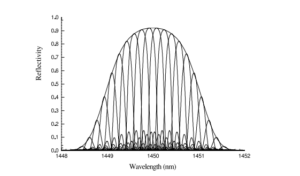Fiber optic sensors work well in tight spots and applications with a high degree of electrical noise, but care must be taken when specifying these critical components.
Sensing part presence in machines, in fixtures, and on conveyors is an important component of industrial automation. Error-proofing assembly and controlling sequence based on the presence or absence of a part is often required. Many types of sensors are available, including inductive, magnetic, capacitive, and photoelectric. Each has its own strengths and weaknesses depending on the application.
Photoelectric sensors come with a variety of light-emission types (infrared, visible red, laser Class 1 and 2), sensing technologies (diffuse, background suppression, reflective, through-beam), and housing configurations (photo-eye or fiber optic). Fiber cabling is immune to electrical noise, and the electronics can be mounted away from the noise in a shielded enclosure.
Another very common application is small part assembly. These operations tend to be fully automated, and thus require multiple sensors to confirm part placement (seated) and assembly verification to confirm completion of an operation. Typically, the parts are moving in and out of a stage quickly on carriers or an indexing table. Because travel tolerance is minimal, precise measurement of position becomes essential.
A common issue in fiber optic installations concerns excessive flexing of the fibers. Since the fiber cables are bundles of individual fibers, they typically feel quite pliable, allowing an installer to easily bend the fibers beyond their recommended maximum bend radius. This can cause irrecoverable plastic deformation of the fibers, which will reduce the light transmission or, in the worst case, sever it entirely. The maximum bend radius, listed with all fibers, varies depending on fiber material, bundle size, and fiber dispersion in the bundle—and it must be adhered to in all cases.
Regardless of the application, machine builders must select the proper sensor technology. If fiber-optic sensors are used, amplifiers and fiber-optic heads must be carefully selected for the application to provide robust sensing performance.


 Fiber Bragg Gratings is one of the most meaningful developments in the areas of optical fiber technology, due to their flexibility and unique filtering performance. FBG is defined as the key component in dense wavelength division multiplexing on the basis of their low insertion loss, high wavelength selectivity, low polarization dependent loss, and low polarization modal dispersion.
Fiber Bragg Gratings is one of the most meaningful developments in the areas of optical fiber technology, due to their flexibility and unique filtering performance. FBG is defined as the key component in dense wavelength division multiplexing on the basis of their low insertion loss, high wavelength selectivity, low polarization dependent loss, and low polarization modal dispersion.